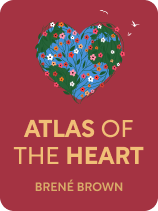

This article is an excerpt from the Shortform book guide to "Atlas of the Heart" by Brené Brown. Shortform has the world's best summaries and analyses of books you should be reading.
Like this article? Sign up for a free trial here .
Do your emotions often get out of hand? How can you channel your negative emotions into more constructive ends?
According to Brené Brown, emotions are a powerful force of love and connection when used correctly and channeled into positive actions. Used improperly, they cut us off from each other, leaving us divided and hateful.
Here’s how to deal with negative emotions, according to Brené Brown.
Dealing With Negative Emotions: Anger and Disgust
Our emotions don’t just give us feedback about our own lives, they also provide valuable guidance in social situations. We have to understand what negative emotions are trying to tell us and recognize when those messages are misguided.
The most basic negative emotions are anger and disgust.
Anger is what we feel when something gets in the way of what we want or disrupts the way we think things are supposed to be. Brown says that anger is a highly active state—it makes us want to lash out, fix the perceived problem, and hurt whatever (or whoever) caused it.
Disgust is a strong aversion to something or someone. Brown believes that disgust stems from wanting to protect ourselves from toxic substances, but that protective instinct has somehow extended to protecting ourselves from “toxic” people and ideas.
The author adds that the combination of anger and disgust is contempt. Contempt is usually directed toward people, and it’s the belief that not only has a person done something wrong, but that he or she has some deep, fundamental flaw. In other words, contempt doesn’t just say, “You did a bad thing”; it says, “You’re a bad person, and I’m better than you.”
Finally, hate is a powerful combination of contempt and fear reserved for those we believe are truly evil. We believe that those we hate are not just bad people, but also dangerous people who need to be destroyed.
How to Positively Use Negative Emotions
Many of us try to ignore our negative feelings or push them away, especially when they relate to others; we try to be patient, tolerant, and loving at all times. However, if we learn to listen to our emotions—even the unpleasant ones—we often find that they’re giving us important information. Here are some actionable tips on how to deal with negative emotions:
- Acknowledge the feeling. Instead of trying to suppress a negative emotion, admit that you’re feeling it. Doing so will allow you to address that feeling in a healthy way.
- Determine what it’s telling you. Figure out the intent behind the feeling. For example, if you’re angry, ask yourself what doesn’t match your image of how things should be; if you feel disgust, ask what that feeling is trying to protect you from.
- Evaluate the feeling. Once you know what the emotion is telling you, ask yourself whether it’s an accurate assessment of the situation. Does someone truly deserve your contempt, or did he just make a mistake? If you feel hatred, ask yourself whether you really believe that person is evil, cruel, and unable (or unwilling) to change—and might there be something you don’t know that would help explain it?
- Take action (or not). Based on your interpretation and evaluation of the feeling, you can take informed, constructive action. For example, you could try to fix whatever is making you angry, or you could work through your feelings of disgust to connect with someone else. However, you might also decide that there’s no way you can help; in that case, by acknowledging and understanding your feelings, you’ve already done all you can.

———End of Preview———
Like what you just read? Read the rest of the world's best book summary and analysis of Brené Brown's "Atlas of the Heart" at Shortform .
Here's what you'll find in our full Atlas of the Heart summary :
- Brené Brown's guide to the many emotions and mental states that people feel
- Explanations of 87 emotions, along with the situations where you’re likely to encounter them
- How to form deeper connections with the people around you






